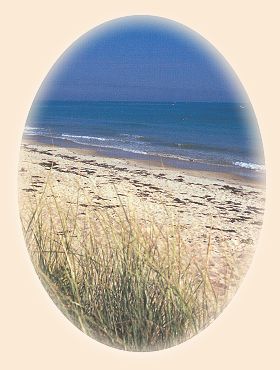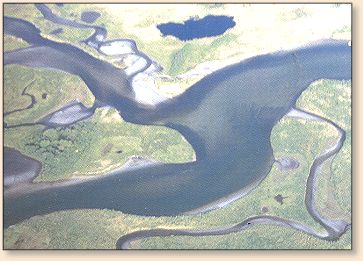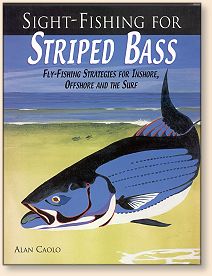The first step when sight-fishing is to find
suitable water in which to stalk stripers.
Quality flats have certain geological and marine
characteristics that ensure consistent water
clarity; support a healthy, nutrient-rich bottom,
moderate water temperatures, and consistently
draw stripers to feed. The layout of the bottom
contour, including shoals, drop-offs, channels,
sand bars, holes and the accessibility to and
from deep water that stripers use to enter and
exit the flats, strongly influences how well a
flat will fish.
If you fish with a guide you should hire someone
who specializes in sight-fishing.
Sight-fishing guides know where and when to find
the fish, they know how to stalk them and they
will be properly equipped. When fishing on your
own, suitable flats may be located by field
observation (during both low and high tides),
examining nautical charts and coastal maps, and
by aerial inspection, if that's realistic for you.
Getting up in a small aircraft over water you plan
to fish often is an invaluable experience and it's
not expensive if a few friends get together and
hire a pilot for an afternoon; don't forget the
camera. Talk to people involved around the water
whenever you can. Surfers, jet skiers (here's your
chance to make something positive of them), swimmers
and clam diggers are all reliable spotters and most
know a striper when they see one. Unlike other
anglers, who may be reluctant to pass this
information on, these folks are usually more than
happy to help.

All flats are not necessarily good sight-fishing
waters. Some shallow areas are great for evening
fishing but attract a few fish during the day.
Others may hold fish only during specific seasonal
events, such as annual worm hatches. Still others
may be fertile areas, but have dark or weed-covered
bottoms that make spotting fish difficult. And some
are just plain inert and do not attract stripers,
period. Sight-fishing flats have distinct features
that differentiate them from other inshore waters.
Knowing these attributes enables you to consistently
locate probable flats on which to find cruising bass.
The most important element is a rich food supply.
Without it, a flat becomes a very unlikely sight-fishing
area. The variety of prey governs how
well the flat will continue to fish as the striper's
food preference shifts throughout the season. For
example, inshore stripers may feed steadily on juvenile
sand eels and flounder for four or five weeks and then
leave the estuary with the seaward departure of these
baitfish in early summer. Strong resident shrimp and
crab populations, however, will hold these dietary
preference simply shifts to a new food source.
Inshore Flats
Of the three sight-fishing environments, inshore
flats are the most prevalent and generally the
easiest to access. The combination of marine and
geographic ingredients required to produce quality
fishing come together far more often than those
required for sight-fishing beaches and there is no
needs for a skiff. The countless small - and medium
sized inshore flats scattered throughout the Northeast
certainly surpass all the marquis offshore
destinations combined in total aggregate acreage.
These flat are found along harbor and bay edges,
inside protected barrier beaches, and throughout
salt ponds and estuary systems. Flats surrounded
by tidal marshland are particularly fertile,
sustaining a wide variety of prey and consistent
sight-fishing throughout the season. Their diverse
structure creates a multitude of interesting
opportunities for the sight-fisher and the same
skills and thought process that go into reading
bonefish flats apply here. It is here that
sight-fishing for stripers and bonefishing become
nearly the same.

Inshore flats are most effectively fished by
walking the water's edge or by wading in knee-deep
water. The fishing is more intimate than the big-water,
team operation typical of the offshore experience,
and it is far more tranquil than the exhilarating,
high energy experience of the surf. The fish most
often found in these waters run smaller than those
normally found on ocean flats and are noticeably
less educated.

As a result, inshore fishing is simpler than in other
sight-fishing waters. Forgiving fish in a forgiving
fly fishing environment moderate the challenge making
this the best place to learn and gain experience. It's
fun and relaxing fishing - no boat, no guide, no waves,
plenty of space and plenty of hungry fish! ~ Alan Caolo
Credits: Excerpt and photo from Sight-Fishing
for Striped Bass Fly-Fishing Strategies for Inshore,
Offshore and the Surf, by Alan Caolo, Published by Frank
Amato Publications. We appreciate use permission. |



